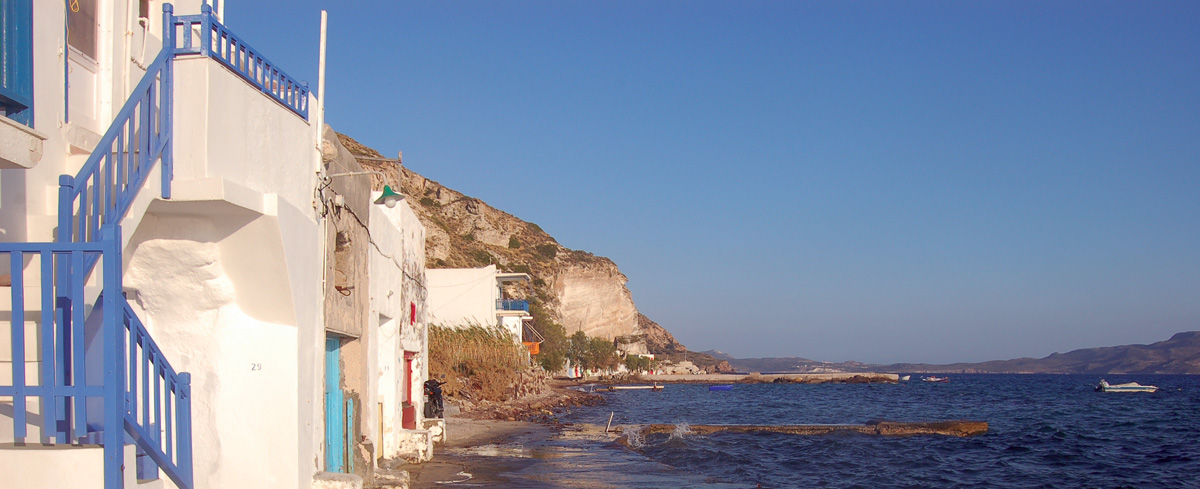
Milos is a unique island. Its name comes from the ancient word “vílos” meaning sheep, which later became “mílos”. However, some sources say, the island was named after Milos, the head of a royal family who was sent by the goddess Aphrodite to become the first inhabitant of the island.
Geologically, Milos is almost an entirely volcanic island. It is located on the volcanic arc of the southern Aegean, where the Eurasian plate meets the African plate (the two plates converge and the latter sinks below the former at a speed of 2.5 cm per year). The volcanic activity of the island permanently ceased 90,000 years ago. Indeed volcanic craters are visible at the sites of Fyríplaka and Tráchila.
In ancient times Milos enjoyed great prosperity due to its mineral wealth. It has been inhabited since the Neolithic Age (7000 BC) and soon became rich thanks to its obsidian stone, a black volcanic rock that was used mainly in weapons and tools.
From the beginning of the Bronze Age, Milos played an important role in the Cycladic world, focusing on the city of Fylakopís. Excavations between 1896 -1899, by the British School, show with many findings the developed trade it had at that time with Crete and the Cyclades, the wealth of the city but also the advanced military installations.
After the descent of the Greek tribes, Dorians settled in Milos around 1000 BC. Since then, life transferred from Fylakopís to a new city which was built, in the area of today’s Klima. This city had a port, a citadel and an amphitheatre. The masterpiece of Aphrodite of Milos was discovered close to the amphitheatre and is today displayed in the Louvre.
During the Classical years, the inhabitants of Milos refused to grant “earth and water” to the Persians and fought on the side of the rest of the Greeks in the naval battle of Salamis and the battle of Plataea. Later, however, they did not join the Athenian Alliance, which led to conflict with the Athenians. The people of Mílos lost and the city was destroyed in 415 BC by the Athenians, who slaughtered all males over 12 years old.
Until 311 BC Milos belonged to Macedonia and then to Egypt. In Roman times, its fate followed that of the rest of the Cyclades.
Τhe island suffered great destruction by an earthquake in the 6th century AD.
In the 16th century and for 2.5 centuries, the island was included in the unwritten law of pirates of all seas as neutral. They sailed here to sell their prey, procure food, rest and make repairs.
In Milos there are large deposits of minerals and even today there are many mining units.
Adámantas: Its name derives from the word “diamond”. It is located in a leeward site, in the island’s gulf, and is the main port of the island. It has cafes and restaurants, shops, hotels, bars and more. Visit the churches of Agía Triáda and Ágios Charálambos.

Pollónia: Apollónia or Pollónia is one of the most popular settlements in Mílos. Due to its natural beauty and antiquities to be found in the area, Pollónia has developed into a tourist centre and is very popular with visitors to the island. It is the second port of Mílos and connects it with Kímolos and Glaronísia via a local ferryboat.



